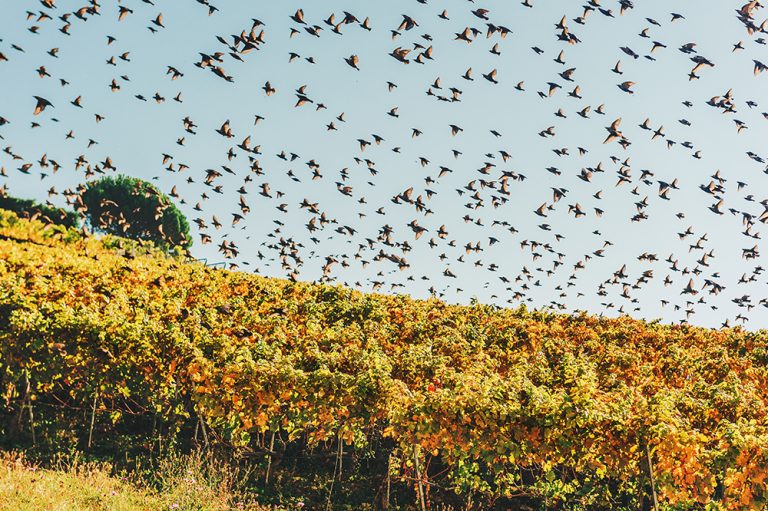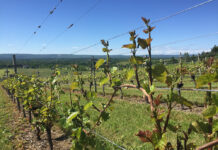
California’s rich agricultural landscape is renowned for its vineyards and the exceptional wines they produce. However, the success of these vineyards often faces a significant challenge in the form of wildlife intrusions. Animals like deer, birds and rodents can cause substantial damage to grapevines, resulting in decreased yields and compromised grape quality.
To mitigate this issue, California grape growers should incorporate animal deterrent products into their vineyard management practices. These products not only safeguard the integrity of vineyards but also contribute to sustainable farming practices and protect the local ecosystem.
Mitigating Losses
Grapes are a valuable crop for California growers, and protecting vineyards from animal damage is crucial for ensuring a successful harvest. Animals, especially deer, have a voracious appetite for grapevines, consuming leaves, buds and even ripening grapes. This herbivory can lead to significant yield losses and damage the overall quality of the grapes by defoliating young vines. According to UC IPM Guidelines, deer can stunt, distort or kill plants by repetitive browsing, and bucks can sometimes scar bark on trunks and lower limbs when they rub their antlers.
Animal damage can also cause grapevines to become diseased or infected. Some bird species can peck at grapes, leading to wounds that can become infected and lead to rot, while other species can remove the entire grape and even puncture lower grapes with their feet, according to UC IPM Guidelines. Ground squirrels cause a myriad of damage to vineyards in general, including but not limited to direct feeding on grapes, trunk girdling, chewing of irrigation lines, and root damage, which can lead fungal pathogens to infect trees. Rabbits can also chew on bark and clip young branches in search of buds and/or foliage.
This damage in vineyards can result in substantial economic losses for grape growers. By employing animal deterrent products, such as visual and audio repellents, chemical repellents and physical barriers, grape growers can significantly reduce the economic impact of animal intrusions, ensuring a better return on their investment.
Visual and audio repellents like scare devices work by scaring animals like birds away from the grapevines using flashing lights, loud noises and other stimuli (UC IPM notes these devices haven’t yet been found to deter ground squirrels.) Mylar streamers and “scare eye” balloons are common visual repellents and bird bombs, shell crackers, gas cannons and electronic stress calls are common audio repellents. UC IPM has various recommendations for each method but recommends monitoring bird response to stimuli as the effectiveness of a single stimulus will likely wear off over time depending on how long birds have been feeding in a given vineyard. The quicker a visual or audio repellent is implemented, the more effective control will be.
Chemical repellents like fumigation and baiting can deter squirrels and other small vertebrates. Make sure to read label instructions and UC IPM Guidelines to determine usage restrictions.
Physical barriers such as fences and netting, prevent animals from accessing the grapevines altogether. Woven-wire fences and electric fences are especially effective for deterring deer, but they must be tall enough for effective deterrence. UC IPM Guidelines state electric fences are less expensive to install but more expensive to maintain over time. Rabbit fencing can be installed along the bottom of deer fencing if both animals are an issue, but the severity of the rabbit problem and size of the vineyard may dictate only the deer fence being necessary. Netting works well against birds but is one of the most expensive options for deterring them.
When choosing animal deterrent products, growers should consider several factors, including the type of animal they want to repel, the size and layout of their vineyard, and their budget.
Protecting Biodiversity
The use of animal deterrent products in vineyards goes beyond protecting grape crops and financial interests; it also contributes to the preservation of biodiversity and the overall health of the ecosystem. When animals like deer, birds and rodents consume grapevines, they disrupt the natural balance of the local flora and fauna. By employing animal deterrent products, grape growers can create a harmonious coexistence between their vineyards and the wildlife surrounding them, allowing native plants and animals to thrive.
Many animal deterrent products are designed to be environmentally friendly and safe for wildlife. For example, bird netting is made from recyclable materials and can be reused for several years. By investing in these products, California grape growers can protect their crop without harming the animals that live in the surrounding area.
Compliance with Environmental Regulations
California has stringent regulations in place to protect the environment and wildlife. Grape growers must comply with these regulations to maintain their operating licenses.
Incorporating animal deterrent products into vineyard management practices demonstrates a commitment to environmental stewardship. By adopting these measures, growers show their dedication to preserving wildlife habitats, preventing potential conflicts between agriculture and nature, and maintaining a sustainable balance.
California grape growers face numerous challenges, including wildlife intrusions that can jeopardize the success of their vineyards. Employing animal deterrent products is an effective and environmentally conscious approach to mitigate these challenges. These products help preserve grape crops, reduce economic losses, protect biodiversity, encourage sustainable farming practices and ensure compliance with environmental regulations.






